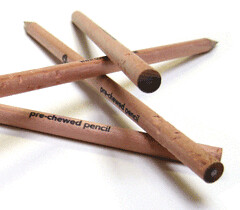
[Note: A fuller treatment of the thoughts introduced in this essay may be found in the recent book, Twenty Things to Do with a Computer Forward 50: Future Visions of Education Inspired by Seymour Papert and Cynthia Solomon’s Seminal Work. The book shares visions for learner-centered educational computing from four dozen experts around the world. This essay was first published March 20, 2020.
Today’s horrific health and economic crisis might have at least one educational benefit, students are “working” from home and like everywhere else in the past two generations, communication is largely via computer generated text, not manual handwriting.
Whenever I visit a school, I scan the environment, observe social interactions, and look for learning artifacts. Even while strolling around spectacular schools — the sort of institutions blessed with phenomenal facilities, grandiose grounds, well-stocked libraries, maker spaces, and performing arts centers — I sense reason for concern. The lower primary classrooms have examples, presumably of exemplary student work, adorning the corridor walls. Sadly, the displayed work fails to match the grandeur, quality, and expectations of the school. Por que?
Thanks to the technology of choice, the pencil, your average elementary school student will spend an inordinate amount of time filling a cleverly designed worksheet with two or three banal sentences. I truly lament the lost opportunities for children to create work commensurate with their creativity and intellect. The prophylactic barrier is the pencil.
How many learning disabilities are created by a six-year-old’s confusion between their ability to express one’s self and their physical prowess at etching letters with a primitive writing stick? The development of a child’s fine motor skills is much better suited to typing than handwriting. Few other intellectual pursuits require muscle development.
Word processing is the undisputed winner of the computer age. No serious writer under the age of a presidential candidate uses a writing stick for more than writing “not my fault” in Sharpie. Writers “write” on computers. Period. Full stop. Fin!
I harbor no doubt that the pencil has retarded literacy development. It spawned the five-paragraph essay, inauthentic “writing” assignments, and has made life unpleasant for teachers sifting through piles of student chicken scratch. The pencil has fundamentally limited the quality and volume of student writing. This is indisputable.
You learn to write by writing. When you waste several years teaching kids, not one, but two different styles of ancient stick scratching, you severely diminish opportunities for students to say something with coherence, persuasion, beauty, or personal voice.
Word processing makes it possible to write more, better, and quicker, while the editing process is continuous and fluid. You may still turn in X number of drafts to satisfy an assignment, but each of those drafts is the product of countless micro-drafts. Best of all, word processing eliminates another useless and ineffective subject of bygone eras, Spelling instruction! Bonus! #winning
Spare me the academic papers by tenure-track weenies at East Metuchen Community College seeking to “prove” that handwriting instruction raises test scores or I will be forced to send you reams of scholarship on butter churning as an effective weight loss strategy or blood letting as an indicator of entrepreneurship.
I am sorry, but publishers of handwriting workbooks and providers of D’Nealian professional development may have to go and get themselves some of those clean coal jobs or find some other way to torture young people. The College Board may be hiring!
If you feel nostalgic about handwriting, offer a calligraphy elective. Now, your school will have an art class! The high-falutin handwritten International Baccalaureate a concern? Relegate penmanship to an 11th grade PE unit.
The only time I use a pen or pencil is when asked to autograph a copy of a book I composed on a computer. Banking is online, so no more check writing excuses. You can teach kids to sign their name on a greeting card for their great grandmother in a session or two and then say, “Aloha!” to Eberhard Faber. Spend the rest of elementary school how to think and engage in work that matters. Their lumbrical muscles will thank you and their intellectual development will no longer be limited by a Number 2 drawing stick.
Teachers, it’s time to say goodbye to your little friend… Pencils R.I.P
For those interested in “keyboarding instruction,” please read this literature review.
“Prechewed Pencils” by Bernie Goldbach is licensed under CC BY-NC-ND 2.0
Veteran educator Gary Stager, Ph.D. is the author of Twenty Things to Do with a Computer – Forward 50, co-author of Invent To Learn — Making, Tinkering, and Engineering in the Classroom, publisher at Constructing Modern Knowledge Press, and the founder of the Constructing Modern Knowledge summer institute. He led professional development in the world’s first 1:1 laptop schools thirty years ago and designed one of the oldest online graduate school programs. Gary is also the curator of The Seymour Papert archives at DailyPapert.com. Learn more about Gary here.
